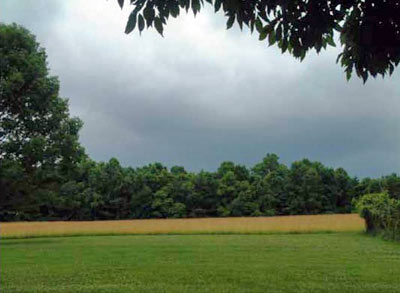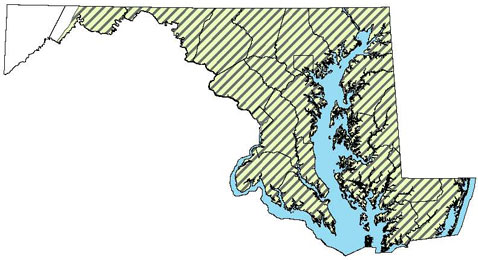Field Guide to Maryland's Lizards (Order Squamata)
Main_Content
Eastern Fence Lizard (Sceloporous undulatus ) |

Photo of Adult Eastern Fence Lizard courtesy of John White
|
Size:
4 - 7¼ inches |
Appearance:- Our only “spiny lizard” or “swift”, it has keeled and pointed scales on its gray (females) to brown (males) back giving it a very rough appearance.
- Males have a prominent blue patch bordered by black on each side of the belly and at the base of the throat, and a plain back.
- Females have a more conspicuously patterned back, with wavy dark crosslines, and may have some pale blue along the sides and base of throat.

Photo of Male Eastern Fence Lizard by Kerry Wixted |
Habitats:
A strictly arboreal species, it is relatively common in open dry, sandy woodlands, particularly pine woods. It is often found on rotting logs and stumps and or in backyards on rail fences.
|
How to Find:Active March to November, however more readily observed mid April through August. Most active mornings and evenings when they may be observed foraging for insect prey on the forest floor. Often detected by the sounds of their scurrying through dry leaves. Can readily be caught by hand against a tree trunk, as they typically only climb a short distance, staying motionless on the opposite side of the trunk.

Photo of Eastern Fence Lizard Habitat courtesy of Rebecca Chalmers
|
Distribution in Maryland:Found throughout the forested areas of Maryland except Garrett County.

|
For More Information: |
|
